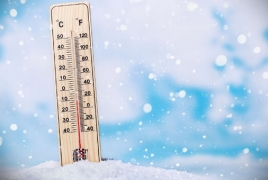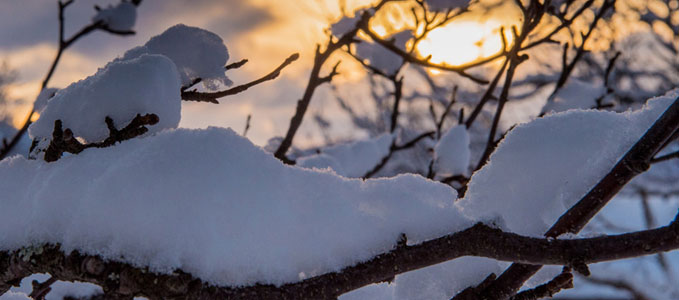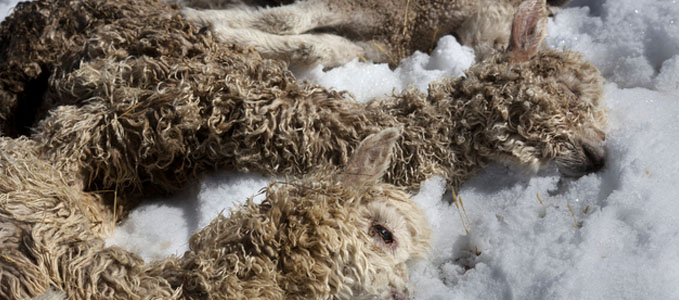
Symptoms depend on the temperature. In mild hypothermia there is shivering and mental confusion. In moderate hypothermia, shivering stops and confusion increases. In severe hypothermia, there is a risk of heart failure. So, when authorities issue extreme cold warnings or alerts, you had better take them seriously. If you’re not dressed properly or you’ve no shelter, extreme cold can kill.
Specific conditions leading to hypothermia include: Wearing clothes that aren't warm enough for weather conditions; Staying out in the cold too long; Inability to get out of wet clothes or move to a warm, dry location; Accidental falls in water, as in a boating accident; Inadequate heating in the home, especially for older people and infants; Air conditioning that is too cold, especially for older people and infants.

In the United States, 13,419 hypothermia deaths occurred between 2003 and 2013. Men and women aged 65 or older are at much greater risk of hypothermia death. Older adults are more vulnerable to hypothermia for a number of reasons. The body's ability to regulate temperature and to sense cold may lessen with age. Older people are also more likely to have a medical condition that affects temperature regulation. Some older adults may not be able to communicate when they are cold or may not be mobile enough to get to a warm location.
Hypothermia usually occurs from exposure to low temperatures, and is frequently complicated by alcohol consumption. Alcohol may make your body feel warm inside, but it causes your blood vessels to dilate, or expand, resulting in more rapid heat loss from the surface of your skin. The body's natural shivering response is diminished in people who've been drinking alcohol. In addition, the use of alcohol or recreational drugs can affect your judgment about the need to get inside or wear warm clothes in cold weather conditions.
The degree of cold is relative for people in different parts of the world. For those living in the northern regions of Russia, for example, -40C is nothing special during winter. Meanwhile, a record cold winter in India (3-4C) killed over 100 people in 2013.

According to The Independent’s survey, the coldest places on Earth are:
Snag, Yukon, Canada -63C
Snag is a village located near the Alaskan Highway in Canada. It holds the current record for the lowest ever temperature recorded in continental North America.
North Ice, Greenland -66C
North Ice was a research station of the British North Greenland Expedition (1952 to 1954) on the inland ice of Greenland. The station recorded the lowest temperature ever in North America on January 9, 1954.
Klinck research station, Greenland -69.4C
The Klinck research station is located within the Arctic Circle. Direct observations of temperatures as low as -69.4C have been made at the station
Verkhoyansk, Russia -69.8C
Verkhoyansk has around 1,434 hardy residents. In winter average monthly temperatures are around −45.4C, though lower have been recorded.
Oymyakon, Russia -71.2C
Officially recognized as one of the two coldest regularly inhabited places on the planet (along with number seven Verkhoyansk), the town of 472 people is known as one of the candidates for the Northern Pole of Cold
Mount McKinley, Alaska -73.8C
Denali, or Mount McKinley, the highest peak in North America, has long been considered the coldest mountain on earth. Winter air temperatures regularly fall to -40C, and lower have been unofficially recorded.
Amundsen–Scott South Pole Station -82C
A scientific research station in the southernmost place on earth the Amundsen–Scott South Pole Station has recorded temperatures below −73C
Dome A, Antarctic Plateau −82.5C
Dome Argus is an Antarctica plateau located near East Antarctica at 4091 meters above sea level. The coldest temperature ever recorded there was -82.5 C in July 2005. It is the highest point of ice sheet in Antarctic region.
Russia’s Vostok research station –89.2C
The Vostok Station is a Russian Antarctic research station at 3488 meters above sea level. It still remains officially the coldest place on earth having measured a bone shattering -89.2C on July 21, 1983.
Dome Fuji ridge East Antarctic Plateau –93.2C
A high ridge located between Dome Argus and Dome Fuji on the East Antarctic Plateau saw the lowest ever temperature on earth according to Nasa satellite data. As the temperature was not recorded directly, however, it is not counted as a new Guinness World record.

Not only people but also animals die from cold. Hundreds of thousands of alpacas, llamas, and other highland grazers got ill, and many of them died in January 2016, because of unusually low temperatures in Peru's southern Andes. In Puno, the hardest hit region in the country, local authorities reported a particularly intense impact — 55,000 deaths — among the alpaca herds that roam the area's high mountain planes that often top 4,000 meters. The head of Puno's agricultural ministry, said a total of 279,000 alpacas had been "impacted" by sickness or death because of the temperatures that have regularly dropped to - 23C. He said the figure was 30,000 for llamas (that are less common in the area) and 370,000 for sheep. The animals that graze in the high Andes — particularly in Peru, Bolivia, and Ecuador — are used to the cold. But last winter was especially harsh in southern Peru with snow falls continually covering grasslands and freezing creeks.

